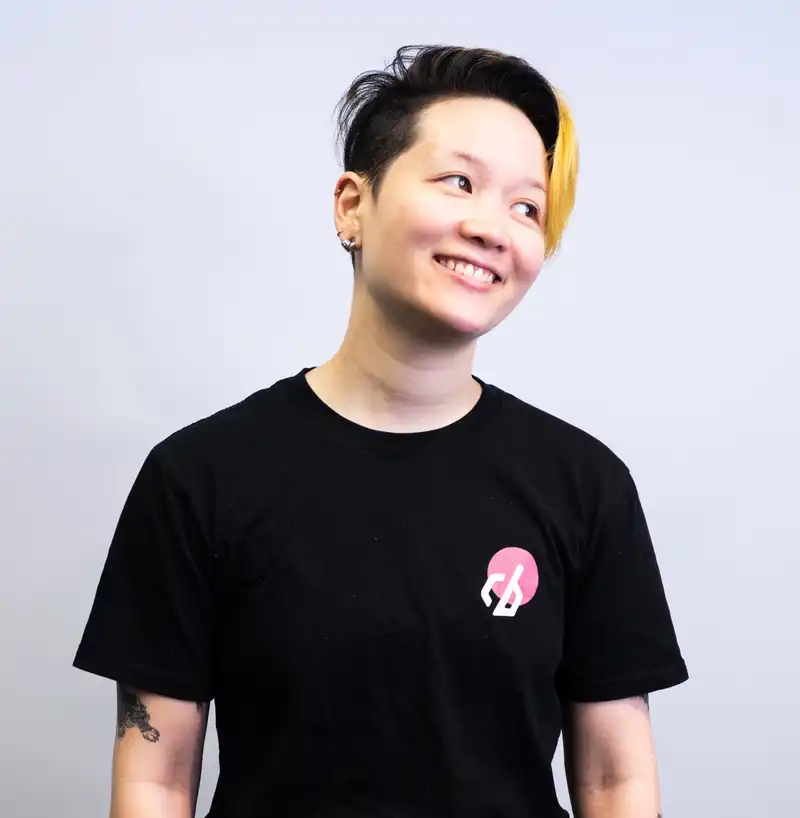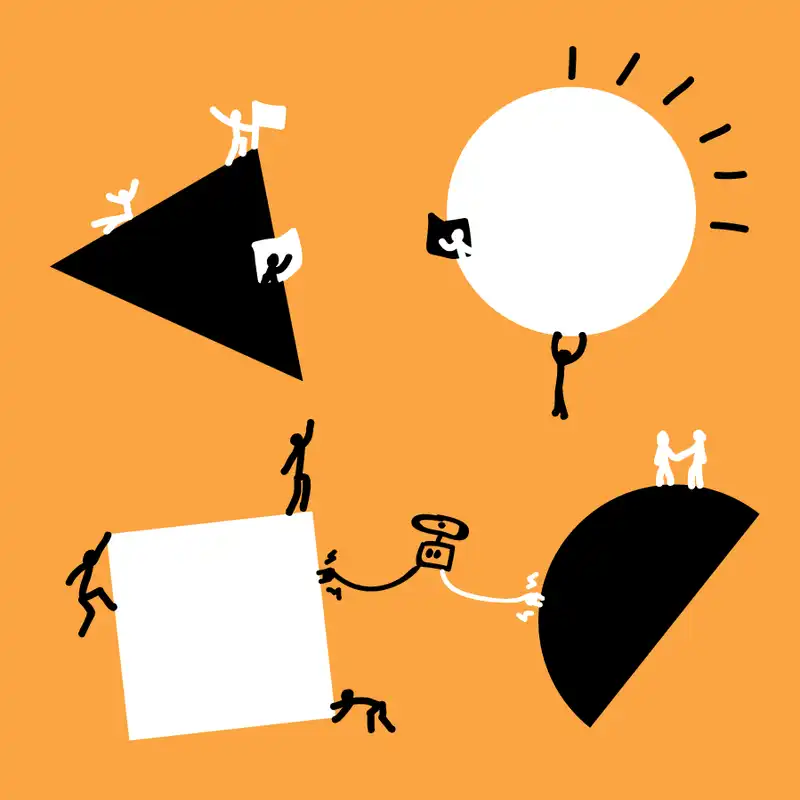Stage
Understand
Suggested time
2 hours
Participants
Scope team
Stakeholders
Facilitator
How to run:
Look at the big picture to see what groups your problem is affecting and what people you should target your solution towards.
- Determine all the groups your product is going to affect
- Create an ecosystem of your product and how it fits into their lives and influences them
- Step back and look for a key group of people
- List down what you know about them
- Create a plan to do further research and interviews with them
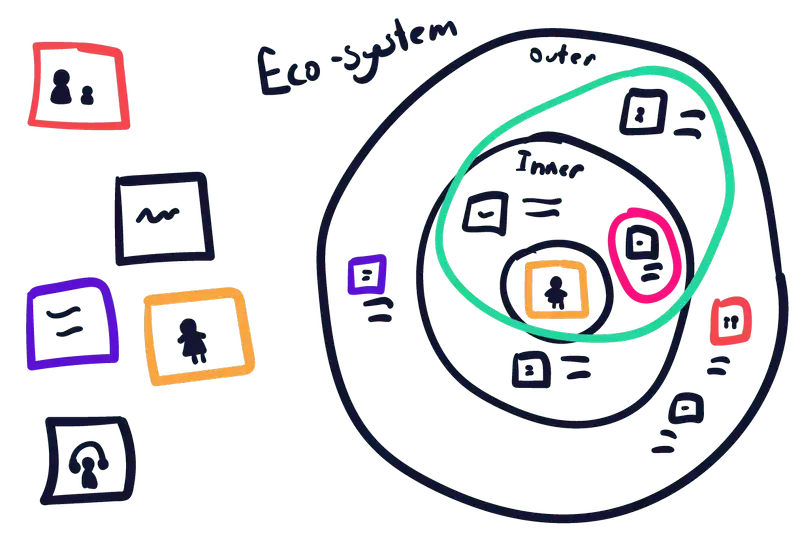
Description
When it comes to solving problems in product and system development, we are always doing it to help other humans; a fact which sometimes gets lost in the back of teams’ minds when they are coming up with solutions for intangible users who they know every little detail about.
To help break away from this mindset, one of the first things we do in a scope is define who the audience is, and break down just how these people think and where to find them. This allows us to have a very solid ground in which to solve our problem, so the theoretical becomes the validated.
All products have a target audience or a niche they are trying to fit into. Even the most monolithic and giant companies still have a group of people they target over others with design and marketing. So, no matter what the size of the system or product, whether it be consumer facing or an internal, there is a group of people you need to be focus on.
Building a product becomes very hard when you are trying to get two opposing audiences to both enjoy the experience. A professional stock trader is going to need a different product design and marketing compared to a grandma who is checking how the market is going. So defining which one of these you are going to build your product for is important so you don’t build a product which tries to cater to both but pleases no one.
Before going into researching and talking to your users, you should take the time to define who they are as a group you hope to market and deliver for. Make sure its narrow, so you do not get so many different opinions it becomes impossible to build for whilst also making sure it is not too narrow, so your niche isn’t just the 5 people around the world who share your problem.
Once you get a product out into the market, you can start branching into other audiences to see how to bring them in.
Method
Determine all your people and groups
The first step is to take to a whiteboard and have the team list out as many groups of people who will be affected by the product or system. Are you designing for professionals? For Children? For the finance department? For consumers? Define whose lives are you going to improve with your solution.
Allow time for discussion, and put these discussion points on post-it notes as you work out your users. They could also be individual team members who are affected by the product who you would need to consult with.
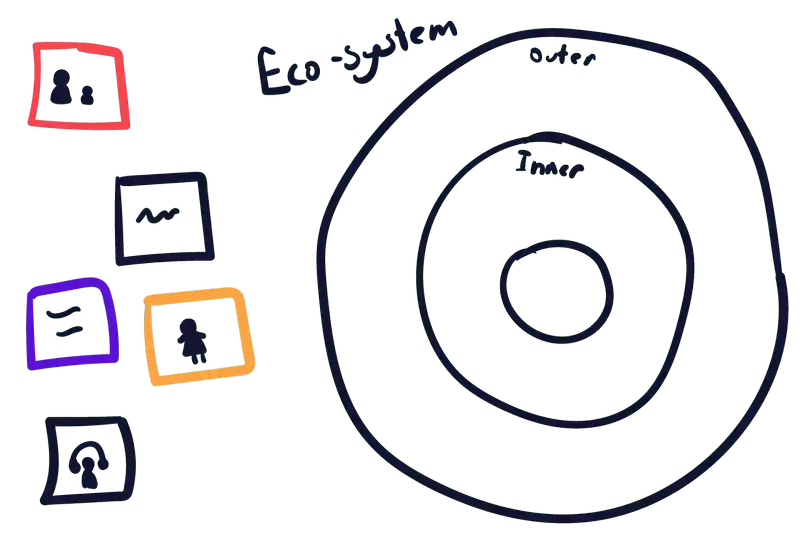
Create an ecosystem
Once you have your groups, create an ecosystem of how they all connect. If you are working from an existing product or service, list how they currently interact. It is here you want to pick a key target to focus your efforts around. For the start of a project, it is important to have the focus to solve for one user group, then expand outwards.
Put this group in the centre of the board and in circles radiating outwards, place the other groups based on how close to your target they are and what behaviours and influences that target will affect those people. For example: if you are targeting your admin staff in an internal tool to start off with, an outer layer of influence might be that speeding up their work flow means that the finance team gets invoices standardised and twice as fast so their day isn’t spent chasing people up.
As you address these changes you may see that another target group is heavily effected or might be the target you believe is a better fit for a solution. Rearrange the board and put them at the centre and go from their angle.
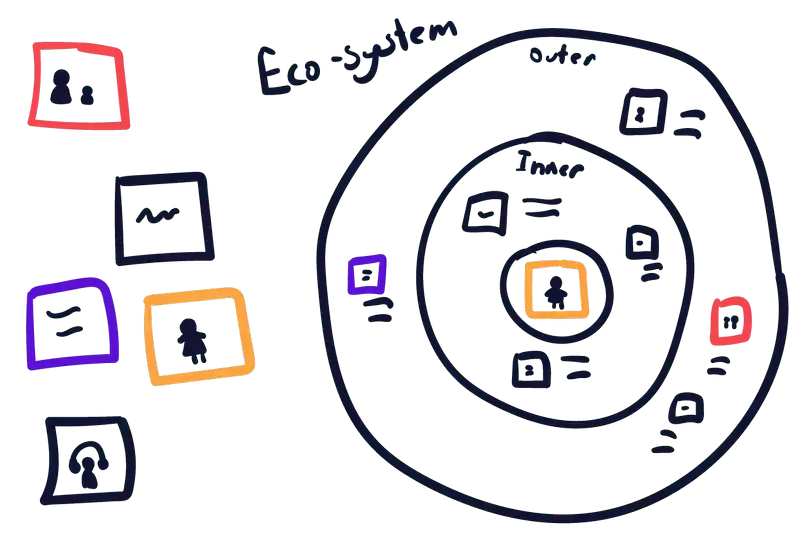
Reflect on the ecosystem
Once your team is happy they have hit each group affected by your problem and possible change, take a look at it all. From here, you can create focus by working on solving the problems of your target group to ensure it affects the other groups in the best way possible. For example: if your target group are school teachers, you may have parents and school admin as two outer groups. The admin may be affected by the speed of reports being generated and sent to the student records, while the parents might be able to see an up to date list of how their child is going during the term. This could influence your team to make sure what the team builds helps the admin staff out first then look at the parent side of things. All while building for the teachers.
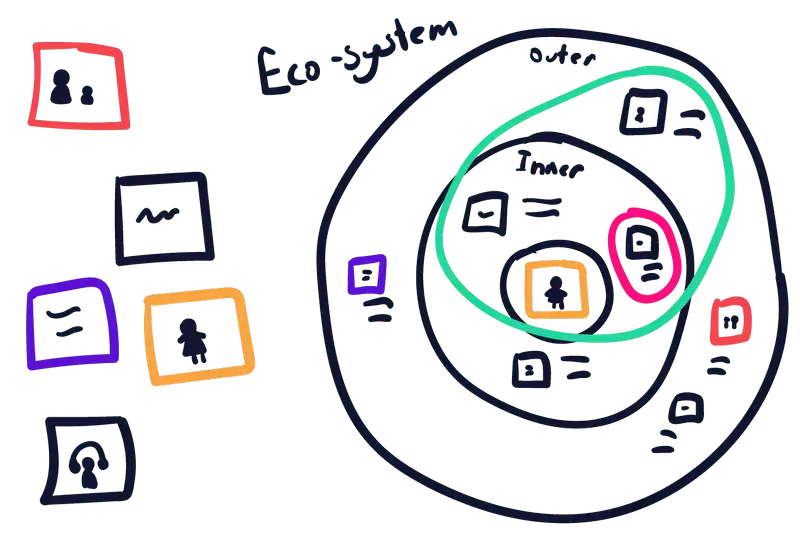
Assumptions
Now you have your target and know what other groups you want to affect; you can start making a list of everything you know about that group. Their demographics, their needs and how they work. If it’s an internal product write down what you know about their goals and who is on that team. These are all your assumptions; some will be closer than others and some might be completely off the mark. That’s fine, the point of this activity is to generate a list of everything you need to go research and validate so you know your problem is one they are experiencing and listen to what they need in a solution.
Plan of action
With all your assumptions and a clear target market you plan on helping with your product the final step is to go and talk to these people. As a group write a list of questions you’d like to see answered and validated. How do the admin staff file reports currently? Why do the sales team always fail to fill out their contacts until the end of the week? What does the consumer think of their product? Take these and decide as a team the best way to speak to this group of people and set times to get interviews done.

